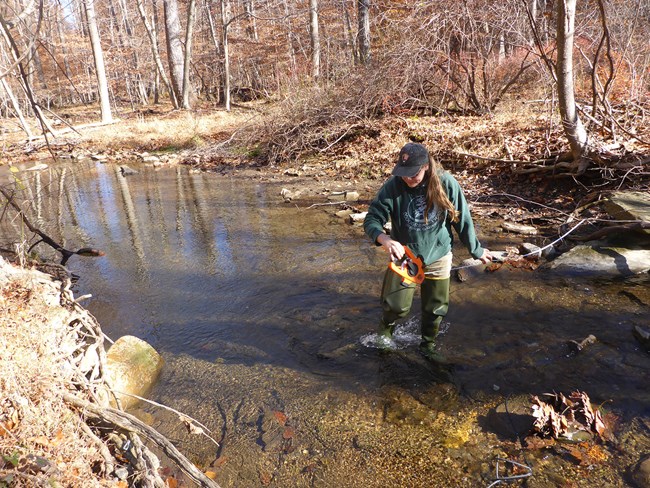
NPS/Nortrup
The National Capital Region Inventory & Monitoring Network monitors air quality, amphibians, birds, forest pests, vegetation, invasive plants, stream water, and stream fish and macroinvertebrates at Catoctin Mountain Park. The results of that monitoring provide park managers with scientific information for decision-making.
Catoctin Mountain Park sits on the eastern slopes of Catoctin Mountain in the northern Blue Ridge mountains. Its 5,890 acres of eastern deciduous forest includes cool mountain streams and rocky scenic outcrops.
The park’s main natural resource management concerns are invasive plants and diseases, overpopulation of deer, and surrounding land development. Climate change is predicted to negatively affect park resources, including raising the temperature of trout-supporting streams, changing forest composition, and favoring invasive species and forests pests and diseases.
What's Happening in Catoctin
NCRN Monitoring at Catoctin by the Numbers
| What We Monitor | Sites at Catoctin* | Monitoring Frequency | Information We Collect |
|---|---|---|---|
| Amphibians | 88 known wetland pools | Annual sampling on a subset of known wetlands Wetland sites are monitored twice per sampling period |
|
| Birds – forest only | 45 (forest bird) | Forest plots are monitored twice a year |
|
| Forest vegetation | 49 (forest vegetation) | Approximately a quarter of plots each year on a four-year cycle |
|
| Stream biota – fish and macroinvertebrates | At streams listed below | Periodic sampling 2007-2014, 2019-2023 |
|
| Stream water quality | 3 (stream site) on Big Hunting Creek, Blue Blazes Creek, and Owens Creek | Stream sites are monitored every other month |
|
Last updated: May 11, 2023
